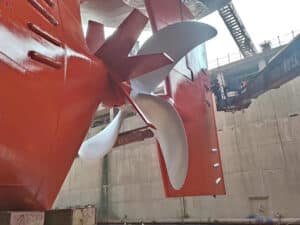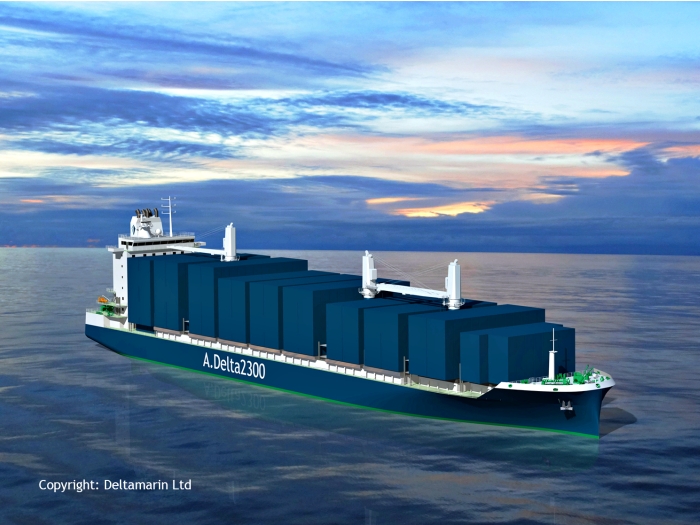
New container feeder design from Deltamarin
Written by Marine Log Staff
AUGUST 14, 2015—Finnish naval architectural and marine engineering firm Deltamarin Ltd. has unveiled the A.Delta2300, the first in a series of container feeder vessel designs that offer “best-in-class” cargo capacity, flexibility and fuel economy that can be adapted to suit operators’ requirements.
Deltamarin worked with AVIC Weihai Shipyard on making A.Delta2300 design as shipyard production friendly as possible, and DNV GL reviewed and commented on the design considering the application of the latest rules and industry practices.
Deltamarin and AVIC Weihai Shipyard are both members of the AVIC Group, which is ranked among the Fortune Global 500 corporations.
“The overall efficiency and flexibility of this container vessel design provides the owners and operators with a solution for future transportation needs,” says Vesa Hamarila, Sales Director of Deltamarin Ltd.
Deltamarin says the A.Delta2300 provides a container capacity of 2,322 TEU in five cargo holds and on deck. The increased cargo hold breadth improves stability in the fully laden condition. Together with the ballast-free approach, this results in an increased utilization rate of about 73% (1,700 TEU) of nominal container intake in the homogeneous loading condition at scantling draught carrying a 14t TEU container. Furthermore, intake can be optimized to a specific cargo profile and even further improved by considering route-specific loading.
The A.Delta2300 is very flexible, allowing pallet-wide container stowage as well as three tiers of high cube containers in the cargo hold without losing container slots. Additionally, a high number of reefer plugs allows smart stowage and the reduction of unnecessary container movements. These features provide efficient and fluent stowage, which reduces time and costs.
Optimized hull form
Using CFD calculations and three series of model test at the Hamburg Ship Model Basin, Deltamarin optimized the A.Delta2300 hull form to ensure low resistance combined and high propulsion efficiency. As a result, the vessel requires only low power at the design speed compared to similar current designs.
The daily main engine fuel oil consumption is decreased to 42 tons/day at a 19-knot service speed resulting in superior fuel efficiency of 0.033 tons/TEU/day. A strikingly low deadweight per TEU ratio of less than 16 dwt/14 tons TEU is thus achieved, which is commonly gained only in larger container ships. This efficiency decreases the EEDI (Energy Efficiency Design Index) value to approximately 37% below the IMO reference line complying with Phase 3, which enters into force in 2025.
Optional features of the A.Delta2300 container feeder include LNG readiness, a flexible number of reefer plugs, shaft generator PTO/PTI, scrubber/SCR implementation and gearless design as well as several ice classes. Furthermore, stretched derivative designs are available, the A.Delta2500 and A.Delta2600.
Main Particulars A.Delta2300
| Length overall | 188.60 m |
| Breadth | 30.95 m |
| Draft, design | 8.75 m |
| Draft, scantling | 10.00 m |
| Capacity | 2,322 TEU |
| Capacity at 14 t/TEU | 1,700 TEU |
| Reefer plugs | 500 |
| Deadweight at 10.0 m | 26,580 tons |
| M.E. FOC | 42 tons/day |
| Service speed (15% s.m.) | 19.0 knots |





Leave a Reply
You must be logged in to post a comment.